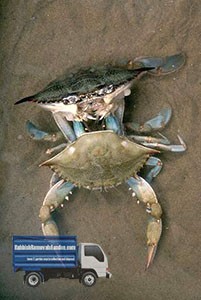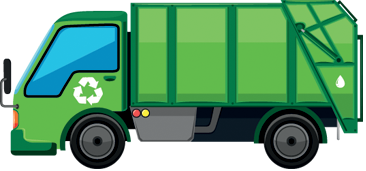There are many alternative or innovative waste management methods and procedures out there, but recycling of metal through use of crab shells is totally out there. Of course, it is not as clear cut as mashing up metal scrap with crab shells and hoping for the best. The technology is still in the making but so far the outlook has been good and R&D is going on full steam. So what it is all about?
 A leading printed circuit board (PCB) manufacturer has joined a collaborative project aiming to introduce seafood industry leftovers into PCB metal recycling technology. Since there is a lot of effluent (production waste water) in manufacturing of printed circuit boards, the project also aims to treat effluent using the same technology derived from seafood industry waste.
A leading printed circuit board (PCB) manufacturer has joined a collaborative project aiming to introduce seafood industry leftovers into PCB metal recycling technology. Since there is a lot of effluent (production waste water) in manufacturing of printed circuit boards, the project also aims to treat effluent using the same technology derived from seafood industry waste.
The project’s full name is Sustainable Treatment of Waste Using Recycled Chitosan or STOWURC for short. The initiative was planned and launched by the UK’s Technology Strategy Board. Project participants explain that the UK’s seafood industry generates large amounts of shellfish waste on an annual basis. This also includes shells leftovers from crabs and other crustaceans. Here is where things get interesting – from an economic point of view, recycling shells is expensive and inviable. However, these shells contain substances called chitosans which are known to absorb different metals.
In the next two years, the STOWURC project will focus on turning crab shells into useful granulated material with highly increased metal absorption properties. This will be done through a serious of mechanical and chemical alterations in order to achieve full conversion. The main metal component in painted circuit boards is copper so the new recycling material will emphasise on absorption of copper. A range of tests and experiments will be devised and conducted as to determine the effectiveness and absorption capacity of the new material.
In terms of technology, the recycling process involves saturation of the new material with copper, retention of copper, and then release of copper through de-absorption which happens in special chemical solution allowing copper to be harvested as metal from the liquid – this is known as electroplating. In addition, scientists are looking to make the chitosans reusable so that once copper is de-absorbed and removed, the chitosans can be used again.
The PCB manufacturer who is backing the project says the technology is still in its early stages and that lots of testing needs to be done in order to optimise the process itself and make copper recycling more efficient. Of course the second key aim is to achieve chitosan reusability and to also develop the technology further so it can be used for recycling of other metals, not just copper.
If you are a business or commercial establishment generating metal scrap, organise for a specialised rubbish removal by a qualified service provider who is authorised to transport and dispose of such waste. Perhaps recycling metal through use of crab shells is still some time away, you can still do your bit in raising the UK’s recycling rate.

